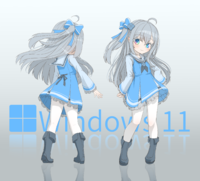We are still actively working on the spam issue.
Home Server/Operating Systems
Contents
Linux
Ubuntu Server
Debian
CentOS
Rocky Linux
AlmaLinux
openSUSE
Fedora
BSD
what is bsd?
what's its philosophy
FreeBSD
OpenBSD
NetBSD
Windows Server
Access Through Your University
how to download Windows server through your college
Niche Server Operating Systems
SmartOS
SmartOS is not Linux, nor is it Solaris (but it is Illumos underneath). It's a type 1 hypervisor platform that is/was the core of Joyent's public cloud platform (has since been sold off to MNX who are claiming continued support for opensource involvement).
Similar to TrueNAS, ZFS is not an opt in feature, and unlike most operating systems it does not require a installation disk, the system is entirely ephemeral running from a USB stick which can be pulled out at anytime. All of your VMs and other persistent data is kept on whatever zpool you name "zones", you are free to add and remove other pools and have all of the ZFS features available in the gz ("global zone") which is the base environment you are given to manage the system. What you can't do in the gz is install most packages, setup additional users, make any persistent changes to config files or run services.
Instead everything you do happens under zones, these are very similar the BSD jails or docker containers, the main difference is they are a first class kernel feature and have exceptional security and efficiency properties. As they are running bare metal with sandboxed zfs datasets it's possible to host samba and NFS shares of the same filesystem the VMs are stored on, in fact there's no reason you couldn't run multiple samba zones with access to separate areas of storage, this means even with a rootkit installed on one of your samba servers the other would remain completely isolated.
If you don't care for zones you can also setup full on HVM instances using either KVM or Bhyve, the later being far more performant and able to run the most recent Windows versions. VNC video consoles and serial ports are automatically setup whenever you boot a VM for remote management.
The gz comes with 3 cli tools for doing day to day tasks: vmadm, imgadm and zlogin. Running man followed by one of these commands will get you some very decent documentation, so l3rn to read.
Suggested reading:
- Bryan Cantrill sperging out about containers
- How to delegate datasets for use as a file server and Creating said file server zone
- Contact information everyone on IRC is very helpful so don't be a cunt




